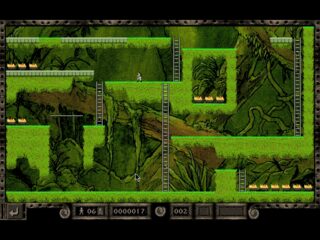Whizz is an isometric platformer created by Flair Software. It was initially released for MS-DOS, Amiga, and Amiga CD-32. Later, it was also ported to Super NES, SEGA Saturn, and PlayStation.
Whizz combines puzzle elements with fast-paced action. Unlike traditional platformers, it introduces a timer-based mechanic where players must efficiently navigate complex levels before time runs out. Featuring a whimsical fantasy world, it follows a rabbit protagonist through maze-like stages filled with enemies, traps, and power-ups.
From a technical standpoint, the game is visually appealing, with colorful, detailed environments that showcase the capabilities of each platform. The Amiga version benefits from smooth scrolling and well-drawn sprite work, but the DOS version features sharper visuals and a higher resolution. While maintaining the same basic design, the SNES version introduces slightly different level layouts and color palettes optimized for the console’s hardware.
The game design revolves around its isometric perspective, which adds a layer of challenge due to tricky platforming sections requiring precise movement. The controls can feel stiff, especially when maneuvering through tight spaces, which is particularly noticeable in the Amiga and SNES versions. The game’s puzzles and obstacles encourage exploration and strategic planning, as rushing through the stages often leads to failure. The game also places a strong emphasis on resource management, with power-ups that extend the timer, increase speed, or allow for temporary invulnerability.
One of the game’s unique elements is its ability system, where certain surfaces can only be traversed if the player has the correct power-up. This adds a layer of strategy but can also lead to frustration when backtracking is required due to a missed item. Enemy encounters, while not the primary focus, add tension to the gameplay, forcing players to balance speed with caution.
Despite its charm, Whizz received mixed reviews upon release. While praised for its originality and bright visuals, it was often criticized for its awkward controls and occasional difficulty spikes. The isometric perspective, while innovative, made precise jumps and navigation cumbersome. Compared to other isometric titles of the era, such as Landstalker: Treasure of King Nole or Solstice, it lacks the depth and refined mechanics that make those games classics.













